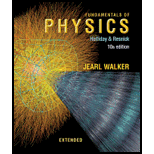
Fundamentals of Physics Extended
10th Edition
ISBN: 9781118230725
Author: David Halliday, Robert Resnick, Jearl Walker
Publisher: Wiley, John & Sons, Incorporated
expand_more
expand_more
format_list_bulleted
Concept explainers
Textbook Question
Chapter 8, Problem 29P
SSM WWW In Fig. 8-42, a block of mass m = 12 kg is released from rest on a frictionless incline of angle θ = 30°. Below the block is a spring that can be compressed 2.0 cm by a force of 270 N. The block momentarily stops when it compresses the spring by 5.5 cm. (a) How far does the block move down the incline from its rest position to this stopping point? (b) What is the speed of the block just as it touches the spring?
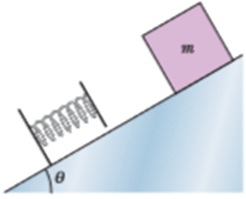
Figure 8-42 Problems 29 and 35.
Expert Solution & Answer
Want to see the full answer?
Check out a sample textbook solution
Chapter 8 Solutions
Fundamentals of Physics Extended
Ch. 8 - In Fig. 8-18, a horizontally moving block can take...Ch. 8 - Figure 8-19 gives the potential energy function of...Ch. 8 - Figure 8-20 shows one direct path and four...Ch. 8 - In Fig. 8-21, a small, initially stationary block...Ch. 8 - In Fig. 8-22, a block slides from A to C along a...Ch. 8 - In Fig. 8-23a, you pull upward on a rope that is...Ch. 8 - The arrangement shown in Fig. 8-24 is similar to...Ch. 8 - In Fig. 8-25, a block slides along a track that...Ch. 8 - Figure 8-26 shows three situations involving a...Ch. 8 - Figure 8-27 shows three plums that are launched...
Ch. 8 - When a particle moves from f to i and from j to i...Ch. 8 - SSM What is the spring constant of a spring that...Ch. 8 - In Fig. 8-29, a single frictionless roller-coaster...Ch. 8 - You drop a 2.00 kg book to a friend who stands on...Ch. 8 - Figure 8-31 shows a ball with mass m = 0.341 kg...Ch. 8 - SSM In Fig. 8-32, a 2.00 g ice flake is released...Ch. 8 - In Fig. 8-33, a small block of mass m = 0.032 kg...Ch. 8 - Figure 8-34 shows a thin rod, of length L = 2.00 m...Ch. 8 - A 1.50 kg snowball is fired from a cliff 12.5 m...Ch. 8 - GO In Problem 2, what is the speed of the car at a...Ch. 8 - a In Problem 3, what is the speed of the book when...Ch. 8 - SSM WWW a In Problem 5, what is the speed of the...Ch. 8 - a In Problem 8, using energy techniques rather...Ch. 8 - SSM A 5.0 g marble is fired vertically upward...Ch. 8 - a In Problem 4, what initial speed must be given...Ch. 8 - SSM In Fig. 8-35, a runaway truck with failed...Ch. 8 - A 700 g block is released from rest at height h0...Ch. 8 - In Problem 6, what are the magnitudes of a the...Ch. 8 - a In Problem 7, what is the speed of the ball at...Ch. 8 - GO Figure 8-36 shows an 8.00 kg stone at rest on a...Ch. 8 - GO A pendulum consists of a 2.0 kg stone swinging...Ch. 8 - Figure 8-34 shows a pendulum of length L = 1.25 m....Ch. 8 - A 60 kg skier starts from rest at height H = 20 m...Ch. 8 - ILW The string in Fig. 8-38 is L = 120 cm long,...Ch. 8 - A block of mass m = 2.0 kg is dropped from height...Ch. 8 - At t = 0 a 1.0 kg ball is thrown from a tall tower...Ch. 8 - A conservative force F=(6.0x12)i N, where x is in...Ch. 8 - Tarzan, who weighs 688 N, swings from a cliff at...Ch. 8 - Figure 8-41a applies to the spring in a cork gun...Ch. 8 - SSM WWW In Fig. 8-42, a block of mass m = 12 kg is...Ch. 8 - GO A 2.0 kg breadbox on a frictionless incline of...Ch. 8 - ILW A block with mass m = 2.00 kg is placed...Ch. 8 - In Fig. 8-45, a chain is held on a frictionless...Ch. 8 - GO In Fig. 8-46, a spring with k = 170 N/m is at...Ch. 8 - GO A boy is initially seated on the top of a...Ch. 8 - GO In Fig. 8-42, a block of mass m = 3.20 kg...Ch. 8 - GO Two children are playing a game in which they...Ch. 8 - A uniform cord of length 25 cm and mass 15 g is...Ch. 8 - Figure 8-49 shows a plot of potential energy U...Ch. 8 - GO Figure 8-50 shows a plot of potential energy U...Ch. 8 - The potential energy of a diatomic molecule a...Ch. 8 - A single conservative force Fx acts on a 1.0 kg...Ch. 8 - A worker pushed a 27 kg block 9.2 m along a level...Ch. 8 - A collie drags its bed box across a floor by...Ch. 8 - A horizontal force of magnitude 35.0 N pushes a...Ch. 8 - SSM A rope is used to pull a 3.57 kg block at...Ch. 8 - An outfielder throws a baseball with an initial...Ch. 8 - A 75 g Frisbee is thrown from a point 1.1 m above...Ch. 8 - In Fig. 8-51, a block slides down an incline. As...Ch. 8 - SSM ILW A 25 kg bear slides, from rest, 12 m down...Ch. 8 - A 60 kg skier leaves the end of a ski-jump ramp...Ch. 8 - During a rockslide, a 520 kg rock slides from rest...Ch. 8 - A large fake cookie sliding on a horizontal...Ch. 8 - GO In Fig. 8-52, a 3.5 kg block is accelerated...Ch. 8 - A child whose weight is 267 N slides down a 6.1 m...Ch. 8 - ILW In Fig. 8-53, a block of mass m = 2.5 kg...Ch. 8 - You push a 2.0 kg block against a horizontal...Ch. 8 - GO In Fig. 8-54, a block slides along a track from...Ch. 8 - A cookie jar is moving up a 40 incline. At a point...Ch. 8 - A stone with a weight of 5.29 N is launched...Ch. 8 - Prob. 60PCh. 8 - When a click beetle is upside down on its back, it...Ch. 8 - GO In Fig. 8-55, a block slides along a path that...Ch. 8 - The cable of the 1800 kg elevator cab in Fig. 8-56...Ch. 8 - GO In Fig. 8-57, a block is released from rest at...Ch. 8 - GO A particle can slide along a track with...Ch. 8 - A 3.2 kg sloth hangs 3.0 m above the ground. a...Ch. 8 - SSM A spring k = 200 N/m is fixed at the top of a...Ch. 8 - From the edge of a cliff, a 0.55 kg projectile is...Ch. 8 - SSM In Fig. 8-60, the pulley has negligible mass,...Ch. 8 - GO In Fig. 8-38, the string is L = 120 cm long,...Ch. 8 - SSM In Fig. 8-51, a block is sent sliding down a...Ch. 8 - Two snowy peaks are at heights H = 850 m and h =...Ch. 8 - SSM The temperature of a plastic cube is monitored...Ch. 8 - A skier weighing 600 N goes over a frictionless...Ch. 8 - SSM To form a pendulum, a 0.092 kg ball is...Ch. 8 - We move a particle along an x axis, first outward...Ch. 8 - SSM A conservative force Fx acts on a 2.00 kg...Ch. 8 - At a certain factory, 300 kg crates are dropped...Ch. 8 - SSM A 1500 kg car begins sliding down a 5.0...Ch. 8 - In Fig. 8-65, a 1400 kg block of granite is pulled...Ch. 8 - A particle can move along only an x axis, where...Ch. 8 - For the arrangement of forces in Problem 81, a...Ch. 8 - SSM A 15 kg block is accelerated at 2.0 m/s2 along...Ch. 8 - A certain spring is found not to conform to Hookes...Ch. 8 - SSM Each second, 1200 m3 of water passes over a...Ch. 8 - GO In Fig. 8-67, a small block is sent through...Ch. 8 - SSM A massless rigid rod of length L has a ball of...Ch. 8 - A 1.50 kg water balloon is shot straight up with...Ch. 8 - A 2.50 kg beverage can is thrown directly downward...Ch. 8 - A constant horizontal force moves a 50 kg trunk...Ch. 8 - GO Two blocks, of masses M = 2.0 kg and 2M, are...Ch. 8 - A volcanic ash flow is moving across horizontal...Ch. 8 - A playground slide is in the form of an arc of a...Ch. 8 - The luxury liner Queen Elizabeth 2 has a...Ch. 8 - A factory worker accidentally releases a 180 kg...Ch. 8 - If a 70 kg baseball player steals home by sliding...Ch. 8 - A 0.50 kg banana is thrown directly upward with an...Ch. 8 - A metal tool is sharpened by being held against...Ch. 8 - A swimmer moves through the water at an average...Ch. 8 - An automobile with passengers has weight 16 400 N...Ch. 8 - A 0.63 kg ball thrown directly upward with an...Ch. 8 - The summit of Mount Everest is 8850 m above sea...Ch. 8 - A sprinter who weighs 670 N runs the first 7.0 m...Ch. 8 - A 20 kg object is acted on by a conservative force...Ch. 8 - A machine pulls a 40 kg trunk 2.0 m up a 40 ramp...Ch. 8 - Prob. 106PCh. 8 - The only force acting on a particle is...Ch. 8 - In 1981, Daniel Goodwin climbed 443 m up the...Ch. 8 - A 60.0 kg circus performer slides 4.00 m down a...Ch. 8 - A 5.0 kg block is projected at 5.0 m/s up a plane...Ch. 8 - A 9.40 kg projectile is fired vertically upward....Ch. 8 - A 70.0 kg man jumping from a window lands in an...Ch. 8 - A 30 g bullet moving a horizontal velocity of 500...Ch. 8 - A 1500 kg car starts from rest on a horizontal...Ch. 8 - A 1.50 kg snowball is shot upward at an angle of...Ch. 8 - A 68 kg sky diver falls at a constant terminal...Ch. 8 - A 20 kg block on a horizontal surface is attached...Ch. 8 - Resistance to the motion of an automobile consists...Ch. 8 - SSM A 50 g ball is thrown from a window with an...Ch. 8 - A spring with a spring constant of 3200 N/m is...Ch. 8 - A locomotive with a power capability of 1.5 MW can...Ch. 8 - SSM A 0.42 kg shuffleboard disk is initially at...Ch. 8 - A river descends 15 m through rapids. The speed of...Ch. 8 - The magnitude of the gravitational force between a...Ch. 8 - Approximately 5.5 106 kg of water falls 50 m over...Ch. 8 - To make a pendulum, a 300 g ball is attached to...Ch. 8 - In a circus act, a 60 kg clown is shot from a...Ch. 8 - A 70 kg firefighter slides, from rest, 4.3 m down...Ch. 8 - The surface of the continental United States has...Ch. 8 - A spring with spring constant k = 200 N/m is...Ch. 8 - Fasten one end of a vertical spring to a ceiling,...Ch. 8 - The maximum force you can exert on an object with...Ch. 8 - Conservative force Fx acts on a particle that...Ch. 8 - Figure 8-73a shows a molecule consisting of two...Ch. 8 - Repeat Problem 83, but now with the block...Ch. 8 - A spring with spring constant k = 620 N/m is...
Additional Science Textbook Solutions
Find more solutions based on key concepts
11. (I) (a) Calculate the total force of the atmosphere acting on the top of a table that measures 1.7 m x 2.6 ...
Physics: Principles with Applications
19. a. What is the potential difference between the terminals of an ordinary AA or AAA battery? (If you're not ...
College Physics: A Strategic Approach (4th Edition)
40. Change 546 mm to cm.
Applied Physics (11th Edition)
The ascending order of moment of inertia about axes through centers of the rods.
College Physics: A Strategic Approach (3rd Edition)
A body is subject to three forces; F1=1i+2jN, applied at the point x = 2m, y = 0 m; F2=2i5jN, applied at x = 1 ...
Essential University Physics (3rd Edition)
The advantage of making hologram with X-rays.
Conceptual Physics: The High School Physics Program
Knowledge Booster
Learn more about
Need a deep-dive on the concept behind this application? Look no further. Learn more about this topic, physics and related others by exploring similar questions and additional content below.Similar questions
- A block of mass 0.500 kg is pushed against a horizontal spring of negligible mass until the spring is compressed a distance x (Fig. P7.79). The force constant of the spring is 450 N/m. When it is released, the block travels along a frictionless, horizontal surface to point , the bottom of a vertical circular track of radius R = 1.00 m, and continues to move up the track. The blocks speed at the bottom of the track is = 12.0 m/s, and the block experiences an average friction force of 7.00 N while sliding up the track. (a) What is x? (b) If the block were to reach the top of the track, what would be its speed at that point? (c) Does the block actually reach the top of the track, or does it fall off before reaching the top?arrow_forwardIf the net work done by external forces on a particle is zero, which of the following statements about the particle must be true? (a) Its velocity is zero. (b) Its velocity is decreased. (c) Its velocity is unchanged. (d) Its speed is unchanged. (e) More information is needed.arrow_forwardJane, whose mass is 50.0 kg, needs to swing across a river (having width D) filled with person-eating crocodiles to save Tarzan from danger. She must swing into a wind exerting constant horizontal force F, on a vine having length L and initially making an angle with the vertical (Fig. P7.81). Take D = 50.0 m, F = 110 N, L = 40.0 m, and = 50.0. (a) With what minimum speed must Jane begin her swing to just make it to the other side? (b) Once the rescue is complete, Tarzan and Jane must swing back across the river. With what minimum speed must they begin their swing? Assume Tarzan has a mass of 80.0 kg.arrow_forward
- A block of mass m = 2.50 kg is pushed a distance d = 2.20 m along a frictionless horizontal table by a constant applied force of magnitude F = 16.0 N directed at an angle = 25.0 below the horizontal as shown in Figure P5.8. Determine the work done by (a) the applied force, (b) the normal force exerted by the table, (c) the force of gravity, and (d) the net force on the block. Figure P5.8arrow_forwardConsider a particle on which a force acts that depends on the position of the particle. This force is given by . Find the work done by this force when the particle moves from the origin to a point 5 meters to the right on the x-axis.arrow_forwardConsider a block of mass 0.200 kg attached to a spring of spring constant 100 N/m. The block is placed on a frictionless table, and the other end of the spring is attached to the wall so that the spring is level with the table. The block is then pushed in so that the spring is compressed by 10.0 cm. Find the speed of the block as it crosses (a) the point when the spring is not stretched, (b) 5.00 cm to the left of point in (a), and (c) 5.00 cm to the right of point in (a).arrow_forward
- A block of mass 0.250 kg is placed on top of a light, vertical spring of force constant 5 000 N/m and pushed downward so that the spring is compressed by 0.100 m. After the block is released from rest, it travels upward and then leaves the spring. To what maximum height above the point of release does it rise?arrow_forwardA block of mass m = 2.50 kg is pushed a distance d = 2.20 m along a frictionless, horizontal table by a constant applied force of magnitude F = 16.0 N directed at an angle = 25.0 below the horizontal as shown in Figure P6.3. Determine the work done on the block by (a) the applied force, (b) the normal force exerted by the table, (c) the gravitational force, and (d) the net force on the block. Figure P6.3arrow_forwardAt the start of a basketball game, a referee tosses a basketball straight into the air by giving it some initial speed. After being given that speed, the ball reaches a maximum height of 4.25 m above where it started. Using conservation of energy, find a. the balls initial speed and b. the height of the ball when it has a speed of 2.5 m/s.arrow_forward
- A certain automobile engine delivers 2.24 104 W (30.0 hp) to its wheels when moving at a constant speed of 27.0 m/s ( 60 mi/h). What is the resistive force acting on the automobile at that speed?arrow_forwardA 5.00-kg block is set into motion up an inclined plane with an initial speed of i = 8.00 m/s (Fig. P7.21). The block comes to rest after traveling d = 3.00 m along the plane, which is inclined at an angle of = 30.0 to the horizontal. For this motion, determine (a) the change in the blocks kinetic energy, (b) the change in the potential energy of the block-Earth system, and (c) the friction force exerted on the block (assumed to be constant), (d) What is the coefficient of kinetic friction? Figure P7.21arrow_forwardAt the bottom of an air track tilted at angle , a glider of mass m is given a push to make it coast a distance d up the slope as it slows down and stops. Then the glider comes back down the track to its starting point. Now the experiment is repeated with the same original speed but with a second identical glider set on top of the first. The airflow from the track is strong enough to support the stacked pair of gliders so that the combination moves over the track with negligible friction. Static friction holds the second glider stationary relative to the first glider throughout the motion. The coefficient of static friction between the two gliders is s. What is the change in mechanical energy of the two-glider-Earth system in the up- and down-slope motion after the pair of gliders is released? Choose one. (a) 2smg (b) 2mgd cos (c) 2smgd cos (d) 0 (e) +2smgd cosarrow_forward
arrow_back_ios
SEE MORE QUESTIONS
arrow_forward_ios
Recommended textbooks for you
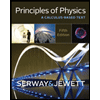 Principles of Physics: A Calculus-Based TextPhysicsISBN:9781133104261Author:Raymond A. Serway, John W. JewettPublisher:Cengage Learning
Principles of Physics: A Calculus-Based TextPhysicsISBN:9781133104261Author:Raymond A. Serway, John W. JewettPublisher:Cengage Learning Physics for Scientists and Engineers: Foundations...PhysicsISBN:9781133939146Author:Katz, Debora M.Publisher:Cengage Learning
Physics for Scientists and Engineers: Foundations...PhysicsISBN:9781133939146Author:Katz, Debora M.Publisher:Cengage Learning University Physics Volume 1PhysicsISBN:9781938168277Author:William Moebs, Samuel J. Ling, Jeff SannyPublisher:OpenStax - Rice University
University Physics Volume 1PhysicsISBN:9781938168277Author:William Moebs, Samuel J. Ling, Jeff SannyPublisher:OpenStax - Rice University Physics for Scientists and Engineers, Technology ...PhysicsISBN:9781305116399Author:Raymond A. Serway, John W. JewettPublisher:Cengage Learning
Physics for Scientists and Engineers, Technology ...PhysicsISBN:9781305116399Author:Raymond A. Serway, John W. JewettPublisher:Cengage Learning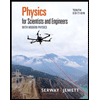 Physics for Scientists and Engineers with Modern ...PhysicsISBN:9781337553292Author:Raymond A. Serway, John W. JewettPublisher:Cengage Learning
Physics for Scientists and Engineers with Modern ...PhysicsISBN:9781337553292Author:Raymond A. Serway, John W. JewettPublisher:Cengage Learning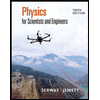 Physics for Scientists and EngineersPhysicsISBN:9781337553278Author:Raymond A. Serway, John W. JewettPublisher:Cengage Learning
Physics for Scientists and EngineersPhysicsISBN:9781337553278Author:Raymond A. Serway, John W. JewettPublisher:Cengage Learning

Principles of Physics: A Calculus-Based Text
Physics
ISBN:9781133104261
Author:Raymond A. Serway, John W. Jewett
Publisher:Cengage Learning

Physics for Scientists and Engineers: Foundations...
Physics
ISBN:9781133939146
Author:Katz, Debora M.
Publisher:Cengage Learning

University Physics Volume 1
Physics
ISBN:9781938168277
Author:William Moebs, Samuel J. Ling, Jeff Sanny
Publisher:OpenStax - Rice University

Physics for Scientists and Engineers, Technology ...
Physics
ISBN:9781305116399
Author:Raymond A. Serway, John W. Jewett
Publisher:Cengage Learning

Physics for Scientists and Engineers with Modern ...
Physics
ISBN:9781337553292
Author:Raymond A. Serway, John W. Jewett
Publisher:Cengage Learning

Physics for Scientists and Engineers
Physics
ISBN:9781337553278
Author:Raymond A. Serway, John W. Jewett
Publisher:Cengage Learning
Conservative and Non Conservative Forces; Author: AK LECTURES;https://www.youtube.com/watch?v=vFVCluvSrFc;License: Standard YouTube License, CC-BY